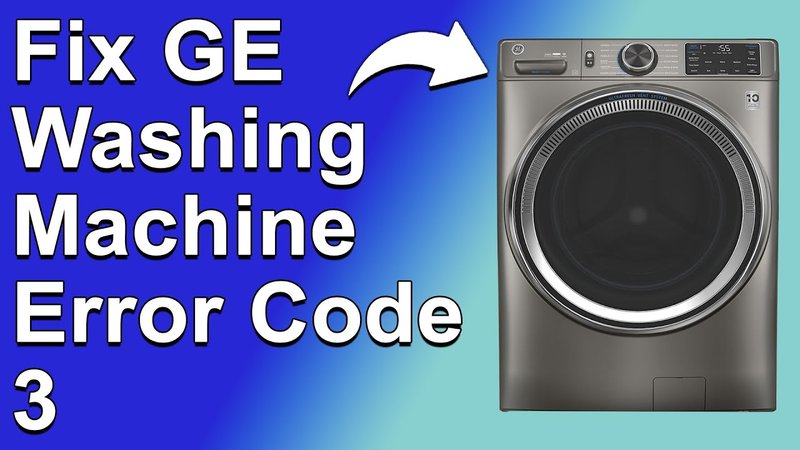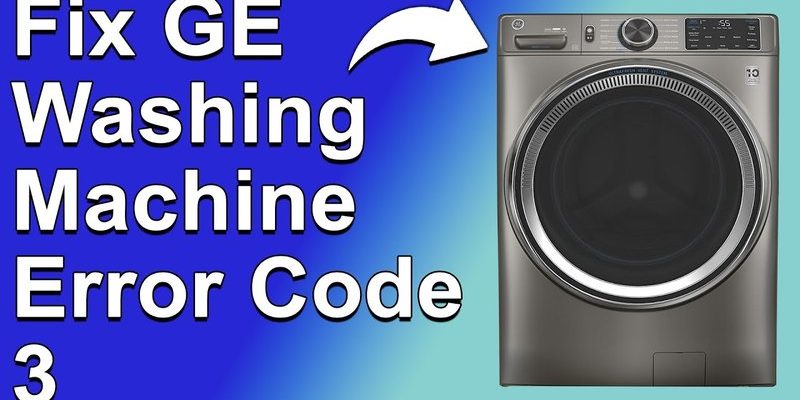
You might be wondering, what exactly causes this unevenness? Well, think of it like this: when you put your laundry in the machine, imagine it’s a dance party in there. If too many clothes—wet and heavy ones, in particular—bunch up on one side, the machine starts to wobble, similar to dancing off-beat. This imbalance makes it hard for the washing machine to spin properly, which is why you see the “UE” code.
Understanding the Uneven Load and Its Impact
Here’s the deal: washing machines are designed to handle your clothes with a balanced approach. When you load your machine, each item is supposed to distribute equally around the drum. If this doesn’t happen, the machine struggles to spin effectively. This imbalance might seem like a minor hiccup, but it can lead to larger issues. For instance, the machine might shake excessively, which isn’t just noisy—it can also cause wear and tear on the internal components over time.
Moreover, the uneven load doesn’t just affect the machine’s spinning. It impacts how well your clothes are cleaned, too. If your clothes are tightly packed on one side, they might not be washed evenly. It’s like trying to clean just one section of a rug while leaving the rest untouched. Not ideal, right? Ensuring that your machine is balanced helps it operate smoothly and keeps your clothes fresh and clean.
So, what can you do about it? The first step is to pause the wash cycle and redistribute the clothes evenly. This might require removing a few items or rearranging them within the drum. Think of it as helping your washing machine get its groove back, making sure it’s balanced to perform its best dance move—complete, even rotations without the wobble.
Common Causes of the “UE” Error
You might be scratching your head, asking, “Why does this happen?” Well, several factors can lead to an uneven load. One common reason is overloading the machine. Picture trying to cram a week’s worth of laundry into one load, hoping to get it done quickly. But too many clothes can clump together, throwing off the machine’s balance. It’s a classic case of trying to do too much at once and ending up with less-than-ideal results.
Another culprit can be items of varying weight mixed together, like washing a heavy blanket with lighter shirts. Think of your laundry like a scale that needs to balance evenly. When there are drastic differences in weights, the scale tips to one side, and so does your washing machine drum. This variance can confuse the machine’s sensors, causing it to stop and display that dreaded “UE” code.
Even using the wrong wash cycle can contribute to the problem. Each cycle is tailored to handle certain types of loads, from delicates to heavy duty. Choosing the correct cycle ensures that the machine operates at the proper speed and intensity, optimized for the weight and fabric of your clothes. Picking the wrong one is akin to running in flip-flops; you might get there, but not without some issues along the way.
Preventing the “UE” Error
Prevention is key to avoiding the “UE” error. Here’s a simple trick: always check your machine’s manual for the recommended load capacity and stick to it. It’s like following a recipe—you get the best results when you use the right amount of each ingredient. Regularly clean your machine’s drum and filter to keep it in top shape and enhance its performance.
When loading your laundry, remember to mix large and small items evenly. Consider washing similarly sized and weighted clothes together. This approach is akin to a well-organized party guest list, where everyone gets along, and the party (or spin cycle) flows smoothly without disruptions.
Finally, always be mindful of selecting the correct wash cycle and adjusting it if you’re unsure. If in doubt, your machine’s manual can be a helpful guide. Following these steps ensures that your washing machine runs efficiently, clothes are cleaned evenly, and you avoid the hassle of an unexpected error code.
In conclusion, understanding what the “UE” error is and knowing how to prevent it can save you time and frustration. It’s like preparing for a smooth, uninterrupted laundry day every time. So next time you’re confronted with this error, you’ll know exactly what to do to keep your machine and your laundry running in perfect harmony.
